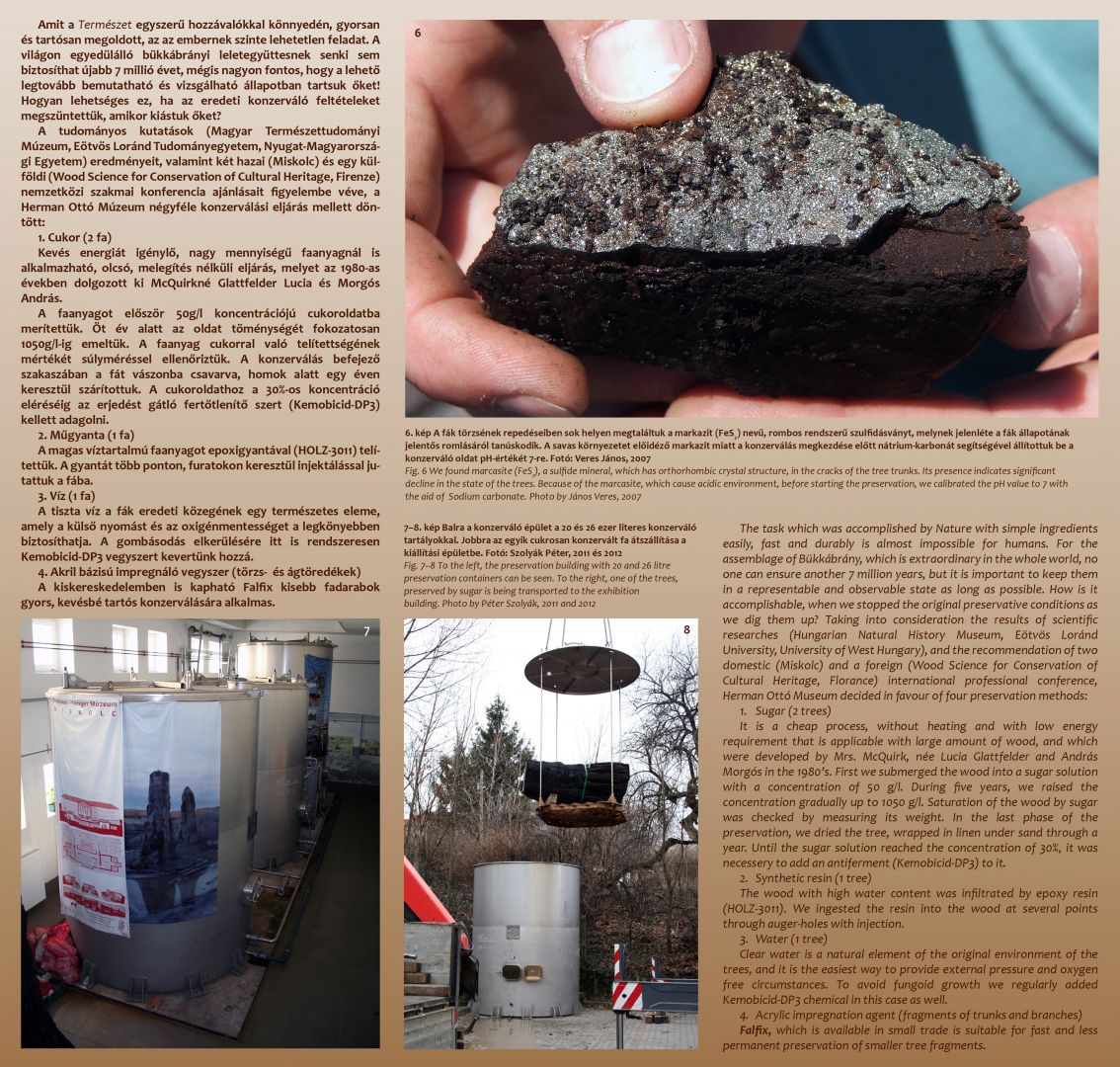RESEARCH HISTORY
Wood preservation
The task which was accomplished by Nature with simple ingredients easily, fast and durably is almost impossible for humans. For the assemblage of Bükkábrány, which is extraordinary in the whole world, no one can ensure another 7 million years, but it is important to keep them in a representable and observable state as long as possible. How is it accomplishable, when we stopped the original preservative conditions as we dig them up? Taking into consideration the results of scientific researches (Hungarian Natural History Museum, Eötvös Loránd University, University of West Hungary), and the recommendation of two domestic (Miskolc) and a foreign (Wood Science for Conservation of Cultural Heritage, Florance) international professional conference, Herman Ottó Museum decided in favour of four preservation methods:
1. Sugar (2 trees)
It is a cheap process, without heating and with low energy requirement that is applicable with large amount of wood, and which were developed by Mrs. McQuirk, née Lucia Glattfelder and András Morgós in the 1980’s. First we submerged the wood into a sugar solution with a concentration of 50 g/l. During five years, we raised the concentration gradually up to 1050 g/l. Saturation of the wood by sugar was checked by measuring its weight. In the last phase of the preservation, we dried the tree, wrapped in linen under sand through a year. Until the sugar solution reached the concentration of 30%, it was necessery to add an antiferment (Kemobicid-DP3) to it.
2. Synthetic resin (1 tree)
The wood with high water content was infiltrated by epoxy resin (HOLZ-3011). We ingested the resin into the wood at several points through auger-holes with injection.
3. Water (1 tree)
Clear water is a natural element of the original environment of the trees, and it is the easiest way to provide external pressure and oxygen free circumstances. To avoid fungoid growth we regularly added Kemobicid-DP3 chemical in this case as well.
4. Acrylic impregnation agent (fragments of trunks and branches)
Falfix, which is available in small trade is suitable for fast and less permanent preservation of smaller tree fragments.
Fig. 6 We found marcasite (FeS2), a sulfide mineral, which has orthorhombic crystal structure, in the cracks of the tree trunks. Its presence indicates significant decline in the state of the trees. Because of the marcasite, which cause acidic environment, before starting the preservation, we calibrated the pH value to 7 with the aid of Sodium carbonate. Photo by János Veres, 2007
Fig. 7–8 To the left, the preservation building with 20 and 26 litre preservation containers can be seen. To the right, one of the trees, preserved by sugar is being transported to the exhibition
building. Photo by Péter Szolyák, 2011 and 2012
